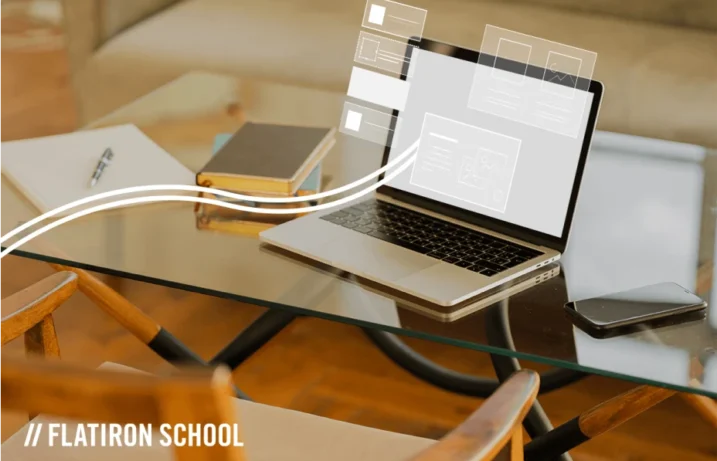As the world shifts online, the demand for UX / UI Product Designers is booming. Even still, getting started can be difficult when you lack experience and don’t know where to start on your journey to becoming a UX / UI Product Designer.
If you’re wondering how to break into the field, you’ve come to the right place! Here’s our guide on getting your first gig.
Determine Your Area of Interest
UX / UI Product Design is a broad discipline, made evident by its multi-part name. Under its umbrella fall several jobs that one may be eligible for:
UI Designers: those who create the visual design of a product
UX Designers: those who create the flow of the product
Product Designers: those who own both the UX and UI experiences with a strategic design focused on business goals
UX Researchers: those who conduct research to inform decisions for the improvement or creation of a product
UX Writers: those who write content to move users through what the product is designed to do
Before considering additional education, internships, or a career change, be clear on which part of UX / UI Product Design interests you the most. Do research, talk to people, and learn as much as you need to until you feel confident moving forward to the next steps.
Want more info? Check out this post: What Is Product Design? What Is UX / UI Design?
Structure Your Learning
Now, this step is probably the most important to get right on your journey to a UX / UI Product Design career. There are several ways to structure your learning including self-taught, getting a traditional degree, or enrolling in a training program.
While each of these methods has merit, there are downsides to some. Traditional degrees are time-intensive (often 2-4 years minimum) and prohibitively expensive for many. A self-taught approach, while significantly cheaper, lacks accountability and guided learning that can be vital to maintaining velocity towards your goal.
Training programs on the other hand – at the risk of sounding cliche – combine the best of both worlds. They are often an economical choice when considering total ROI (return on investment), establish a course to follow, teach practical skills, hold students accountable for progress, and provide guidance throughout.
Some certification courses, such as this one in UX / UI Product Design, even provide post-graduation career coaching to help new graduates find their first job.
Not sure if a UX / UI Product Design bootcamp is worth the investment? Here’s how to know if it’s right for you.
Learn Design Fundamentals
No matter which learning avenue you take, the fundamentals of design are next on the agenda. This boils down to learning to think like a designer, and entails understanding universal design principles, thinking in a user-centric methodology, and developing a “designer’s eye”.
Universal Design Principles
Part of Product Design is a visual art, governed by 7 universal principles. They are, in no particular order, balance, scale, contrast, pattern, movement and rhythm, emphasis, and unity. Basically, what makes something look nice.
Developing an understanding and appreciation of these principles is the fundamental first step toward a career in design.
User-Centered Methodology
Designing digital products to be user-centered is exactly what it says – designing for users, instead of for other stakeholders.
When building out a digital product, designers should be aware of the prospective user’s goals and gather feedback via user research. Meeting users’ needs and wants should be the top priority, and design decisions evaluated for accessibility and inclusion.
The Designer’s Eye
This is an elusive concept and a skill that is developed over time. The study of UX / UI Product Design will inevitably change how a student views the digital world around them. You’ll begin noticing designs on phones, billboards, and in magazines, questioning what you would change, and critiquing its style and accessibility.
While hard to define, developing your “eye” ultimately results in a signature style that will shine through in your portfolio.
Learn How To Use Design Tools
According to research, 42% of hiring managers say familiarity with design tools is the most important skill they look for in a prospective new hire. (1)
So, which tool to try first?
Prioritize those that help you visualize your ideas and design concepts such as Sketch, Adobe, Figma, and Maze. These platforms help communicate your ideas and knowing the basics is critical to getting hired.
Digital designers should also be comfortable with standard and novel interfaces, prototyping, typography, and platform limitations.
Build Experience
In preparation for applying to industry jobs, it’s a good idea to develop some “real world” design experience to showcase on your resume and in your portfolio.
Volunteer your skills to non-profits, small businesses, and community organizations, or advertise your services on freelancing sites like Upwork or Fiverr. These experiences will improve your application and set you apart from the competition.
Create a Portfolio
A standout portfolio is the number-one way to catch a hiring manager’s eye and can make a significant difference between two similar candidates.
Your portfolio should demonstrate your design process and problem-solving skills, giving them a look into what they could expect should they hire you.
Here’s how to build a stellar, attention-grabbing portfolio sure to get you noticed:
Provide context: explain the problem, your problem-solving, and the final concept reasoning to demonstrate your design process to hiring managers.
Highlight your top skills: Put the projects you’re proudest of and include the type of work you’d like to do when you’re hired to attract the right recruiters and companies.
Put it online: post your portfolio online with an easy-to-use interface and ensure that is not password protected to avoid barriers to viewing.
Don’t include everything: Be critical of your work and take out anything that is just okay – this is quality over quantity.
Get feedback: ask an experienced UX / UI Designer to review your portfolio and give honest feedback – they’ll know if it’s industry ready!
Need some inspiration? Check out these 4 Inspiring UX / UI Product Design Portfolios.
Network, network, network!
Now that you’ve got some education, projects, and a portfolio ready to go, it’s time to network!
Unfortunately, however, the old saying “it’s who you know” is true. Studies show that 70% of jobs aren’t posted publically, and as many as 80% of jobs are filled through referrals. (2)
To give yourself the best chance to find a job, it’s time to establish an industry network. Do this by attending conferences (virtual or in-person), joining online communities, pulling on soft connections (aka your friend’s, cousin’s uncle), and reaching out to people on LinkedIn at your target companies.
(By the way, here are our tips for people who hate networking.)
Apply to the right jobs
The skills you’ll learn in the pursuit of a career in UX / UI Product Design are versatile and adaptable. Because of this, you’ll be a good fit for several differently titled jobs, not just “Product Designer.”
Look for related roles that pull on the same skill set including UX / UI Designer, User Researcher, Experience Designer, and Visual Designer.
See our full list of job titles to look for: UX / UI Product Design Job Titles & Salaries.
Ace the interview
Every job interview will be different depending on the company and position, but here are some common questions to prepare for:
- Why did you choose UX / UI / Product Design?
- What is your design process?
- Do you prefer working alone or on a team?
- What are some websites that you visit regularly?
- How do you react to negative feedback?
Practice your answers to these and other typical questions ahead of time, but always remember that honesty is the best policy. Let your personality, talent, and determination shine through and you’re sure to ace your interview.
Beginning a new career as a UX / UI Product Designer won’t be easy, but it is incredibly rewarding. While it will take time, practice, and patience, Flatiron School is here to help prepare you.
Ready to take the next step? Start with a Free Product Design Prep Work, or check out the Product Design Course Syllabus that will set you up for success and launch you into a new and fulfilling career.
Sources:




